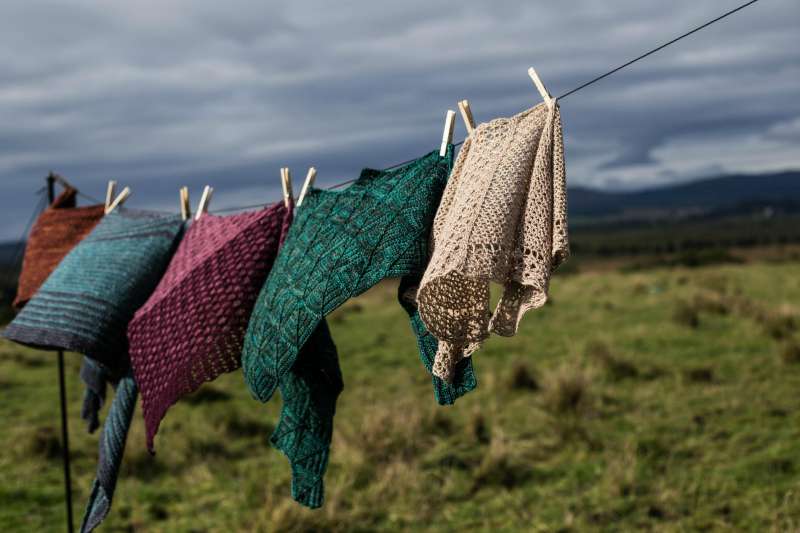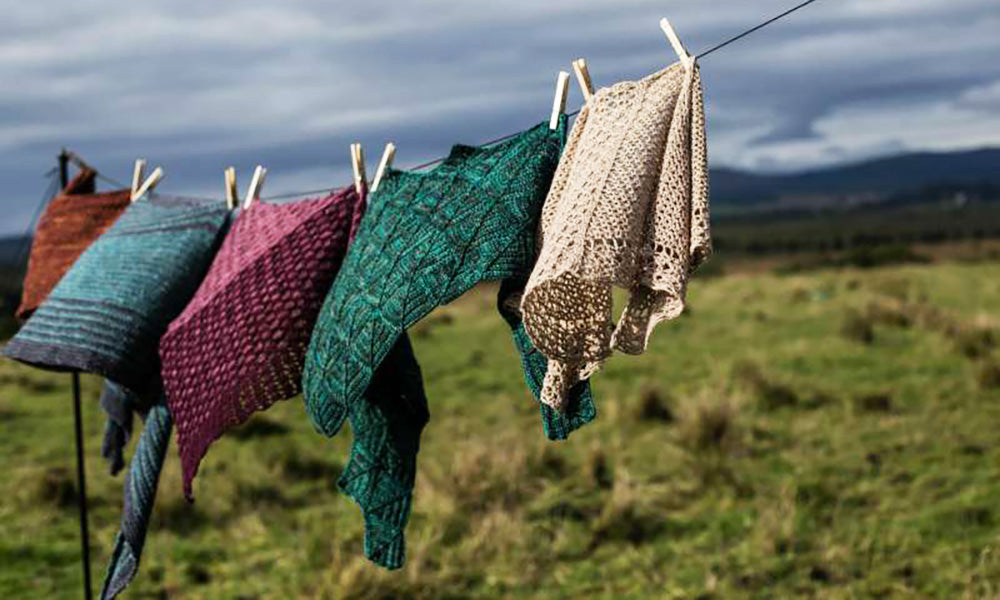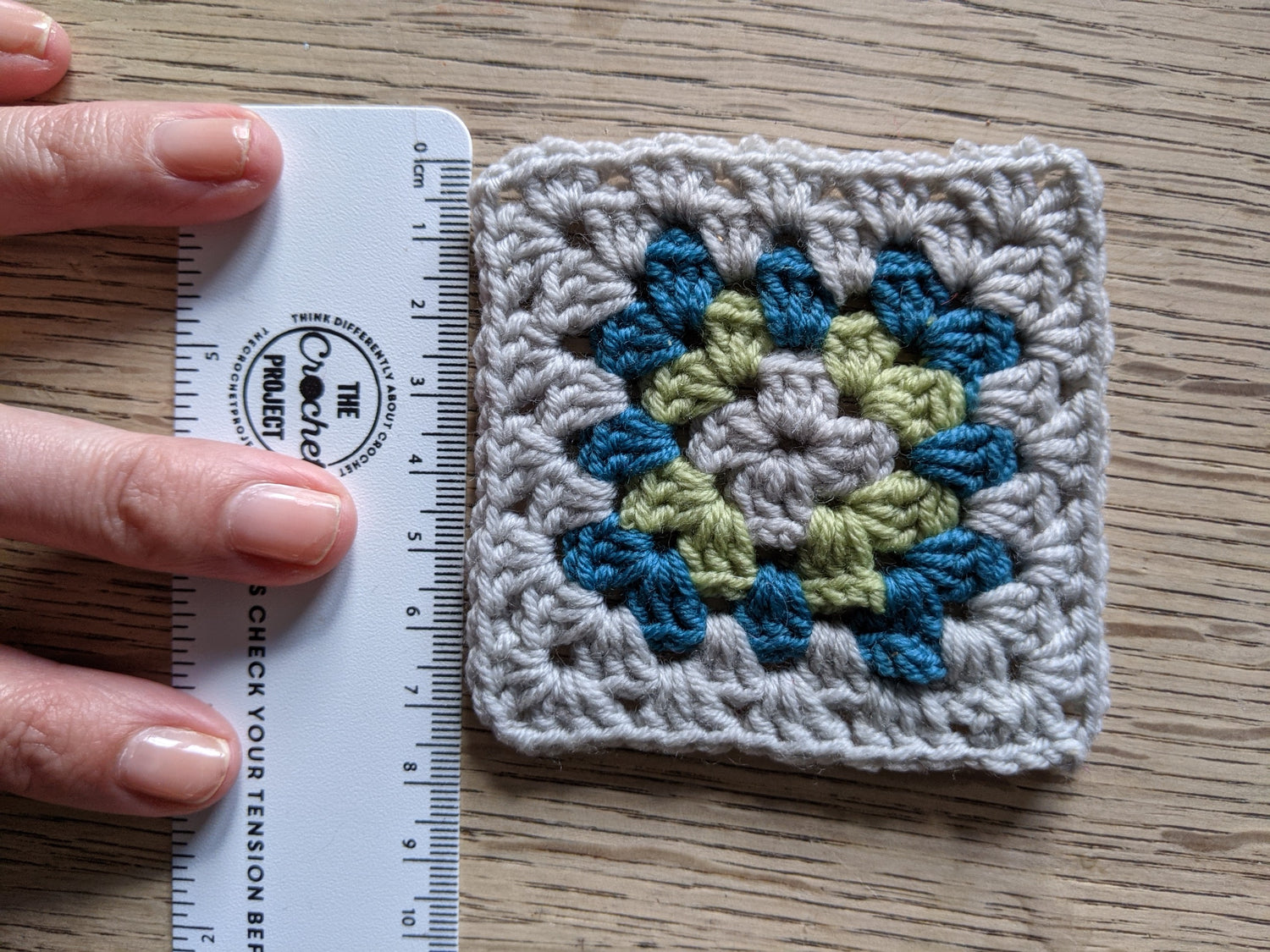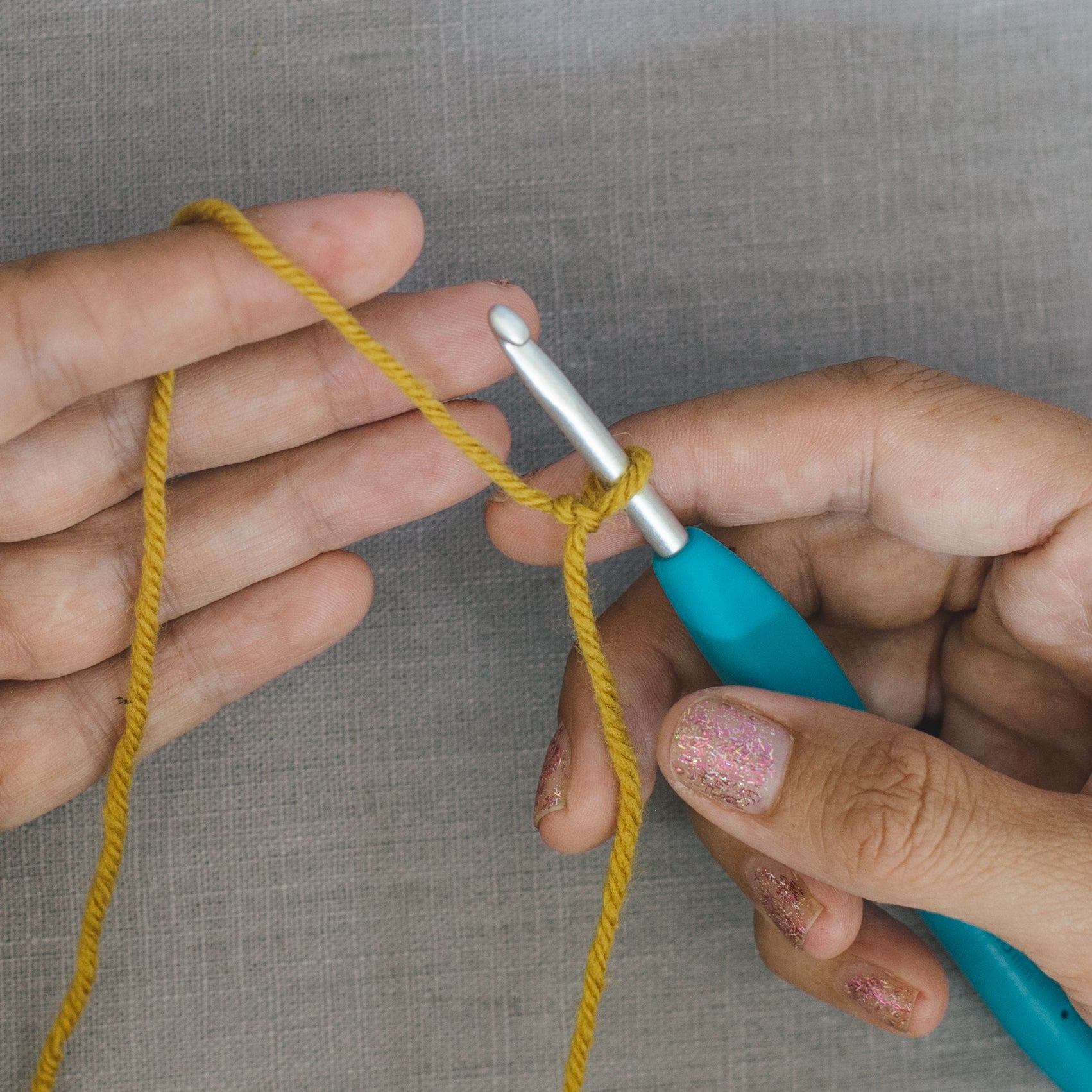You may have heard the term swatching before but what is it? Swatching is making a small square of fabric to check that your tension matches the one listed in the pattern.
The tension (sometimes referred to as gauge) information in a pattern tells you how many stitches and rows you should have in a piece measuring 10cm or 4in (usually)
So tension needs to be measured to make sure that the size that the pattern says your finished item will be is the size it ends up. We start with the suggested hook size and alter it until we match the tension. And we call this process, swatching.
While this isn't as crucial for items that don't have to fit anywhere, such as scarves and shawls, matching the tension also makes sure that the fabric behaves the same way as it was intended and that the yarn amounts specified will be correct. It also helps check the yarn gives the effect you want and practice the stitch pattern.
So it is always important but it is crucial when you want something to fit you, be it a jumper or a pair of mitts. Even a small change in tension can make a finished item too big or too small.
To effectively measure tension you need to be able to measure 10cm/4in so your swatch needs to be larger than this. You don't want to have to measure edge stitches that curl up or might not be even.
You also want to understand what the tension will be when the finished piece is washed (unless you plan on never ever washing it) as some yarns bloom or shrink on washing.
So we need to bear both of these things in mind in our swatching process.
The correct way to measure tension is as follows:
Make a tension square a little over 4in (take the number of stitches given in the tension information and add a few) using the stitch suggested in the pattern in the yarn you plan to use with the hook you plan to use.
Measure the tension before you wash it and keep a note so that you can check your tension while crocheting.
To measure you will lay the swatch flat and place a ruler on top and count the number of stitches and rows you get in 10cm/4in. Measuring the size of the swatch is a common mistake.
Wash and dry the piece as you will wash the finished object. (if you plan to machine wash and tumble dry then do that, if you plan to soak and dry flat then do that)
(Note if you are working a large project in a yarn that contains a lot of cotton, silk, linen or bamboo it may help to hang the tension square with weights attached (threading a knitting needle through the bottom is an easy way to do this) as these fibres grow considerably when the weight of the whole piece acts on the stitches.)

Lay the piece flat to measure and don't tug or pull it to get the right measure (unless you want to be constantly tugging the finished object into shape!)
Measure the washed and dried swatch and compare to the tension information.
If you have too many stitches/rows your finished object will be too small. Repeat the tension square with larger hook.
If you have too few stitches/rows your finished object will be too big. Repeat the tension square with smaller hook.
Any exceptions?
Sometimes tension information is given by the size of motif. In which case you will want to follow the same steps but you will be measuring the whole motif not the stitches within it. If your motif is smaller than the pattern says it should be then you need to go up a hook size, if its larger then go down a hook size and try again.
Swatching in the round
If the pattern is worked in the round to create a circle then you should do that, it can be tricky to measure stitches on a curve so making it a bit wider than needed to get the row and use a flexible tape measure to measure around the curve. Normally in this type of pattern the row tension will be more critical to finished size than stitch tension anyway.
If the pattern is worked in the round to make a flat square (such as a granny square) then work like that.
If a pattern is worked in the round without turning to create a tube then you will need to swatch in the round. You can make the swatch as normal but work more than double the number of stitches you would for a flat swatch and then fold it flat to measure. Or you can work a few extra stitches and cut the swatch open to measure it.
If the pattern is worked in the round with turning to form a tube then you can just work the swatch flat.
Other advantages of making a tension square
As well as the lovely smug feeling you get from having been good and having done what you've been told to, there are other benefits.
Swatches can be repurposed as patch pockets - I often write this into the pattern to encourage people to make the damn swatch!
If you hang on to your swatches they can be very useful for two reasons. If you want to try washing the garment a different way (maybe you are fed up of hand washing) you can test out what might happen to the fabric on the swatch. And if your much loved jumper develops a whole you can take the yarn from the swatch to repair it.
Hopefully I've convinced you, but if I haven't....
How to cheat at tension squares
We know, we get it: Tension squares can seem like a pain to do when you just want to get cracking on a project. While we would never skip them on a big project such as a jumper, we sometimes cheat a little on small items. When making small accessories sometimes a tension square would take as long as the cuff of a sock or the brim of the hat. In this case you can start the item and stop when you have a good amount to measure. Pop a stitch marker in to keep the loop from closing and continue treat this as your tension square, measuring, washing and remeasuring as described before. If the measurements come out right then you can continue working, otherwise you will need to start over with a different sized hook.








Leave a comment
All comments are moderated before being published.
This site is protected by hCaptcha and the hCaptcha Privacy Policy and Terms of Service apply.